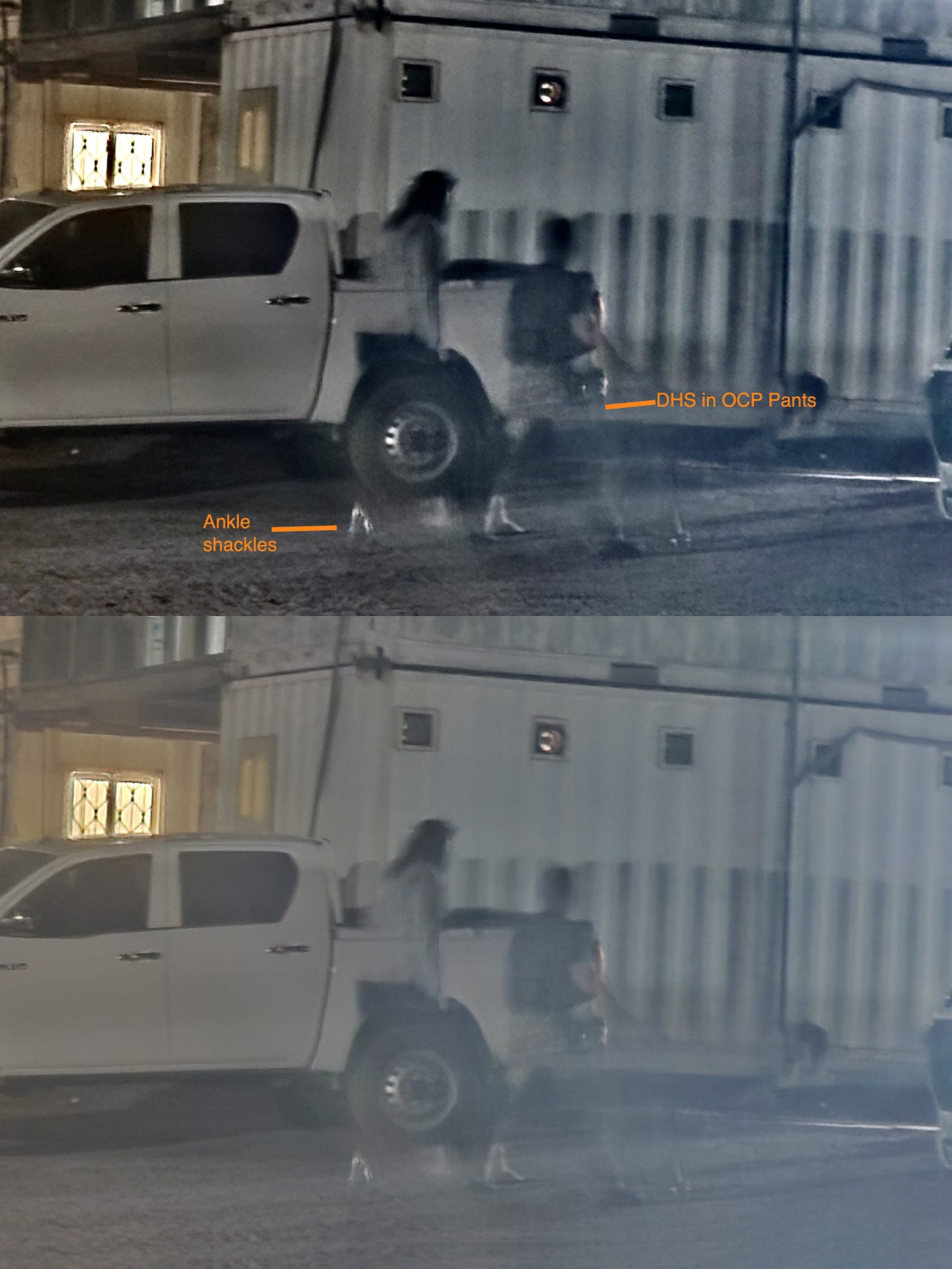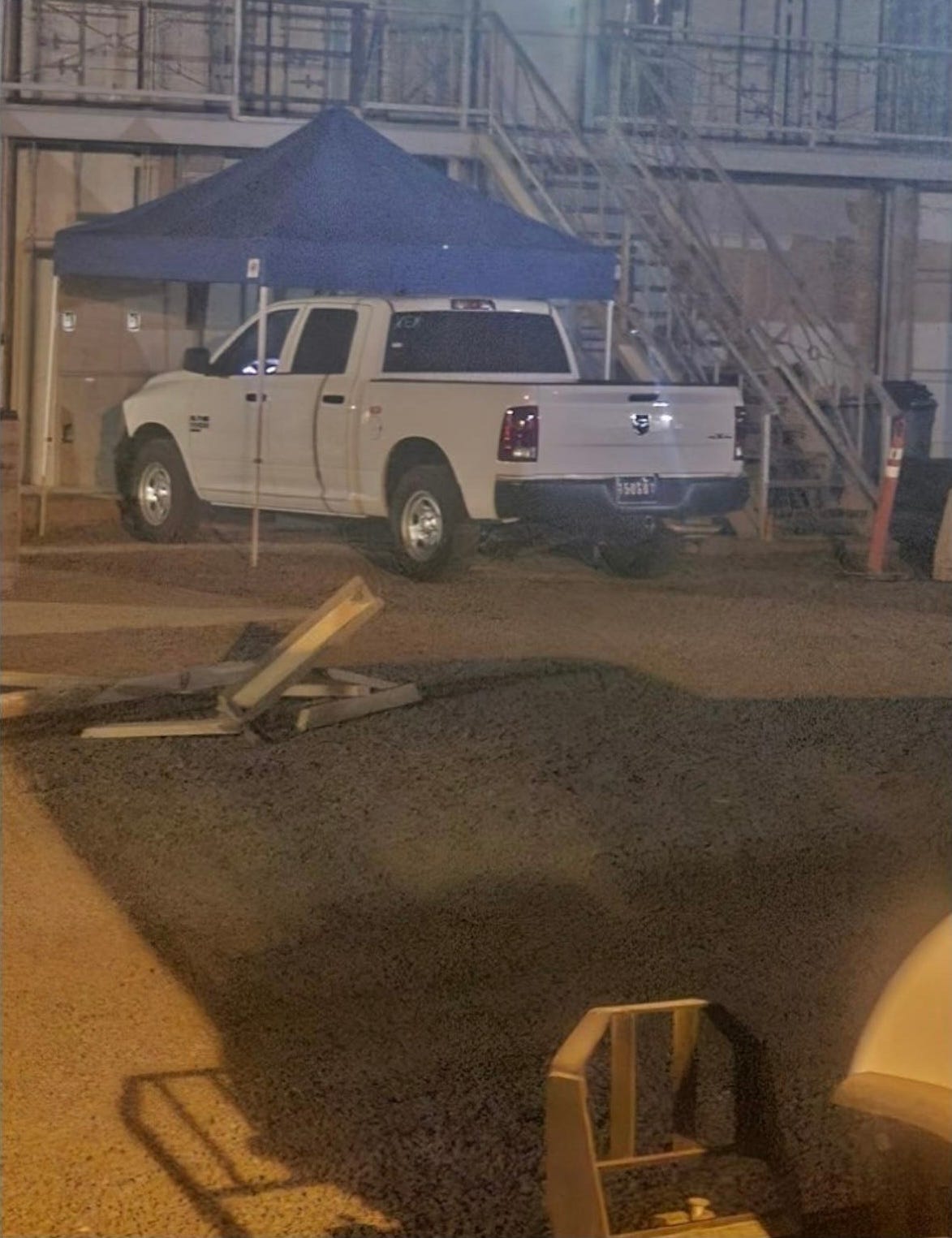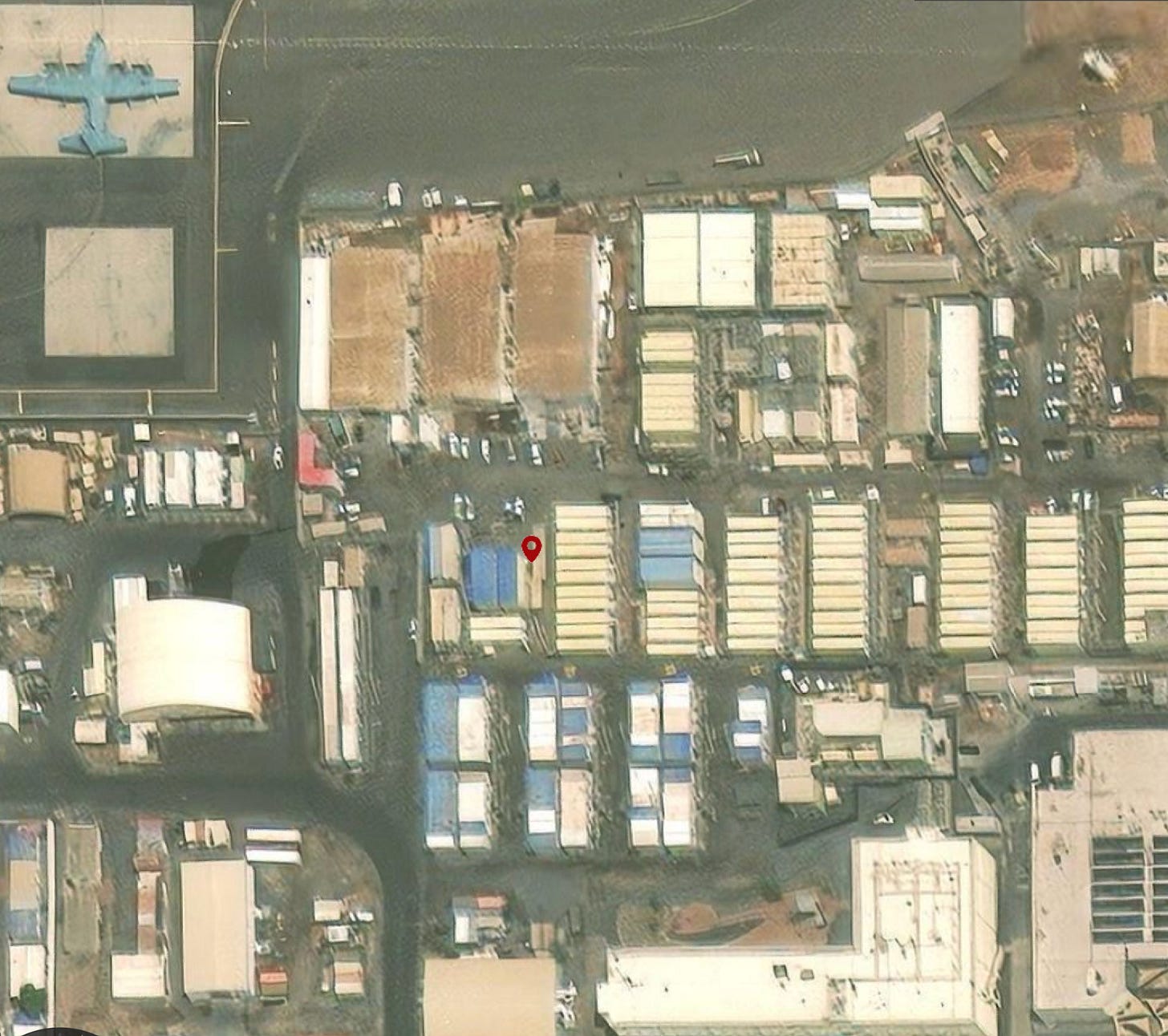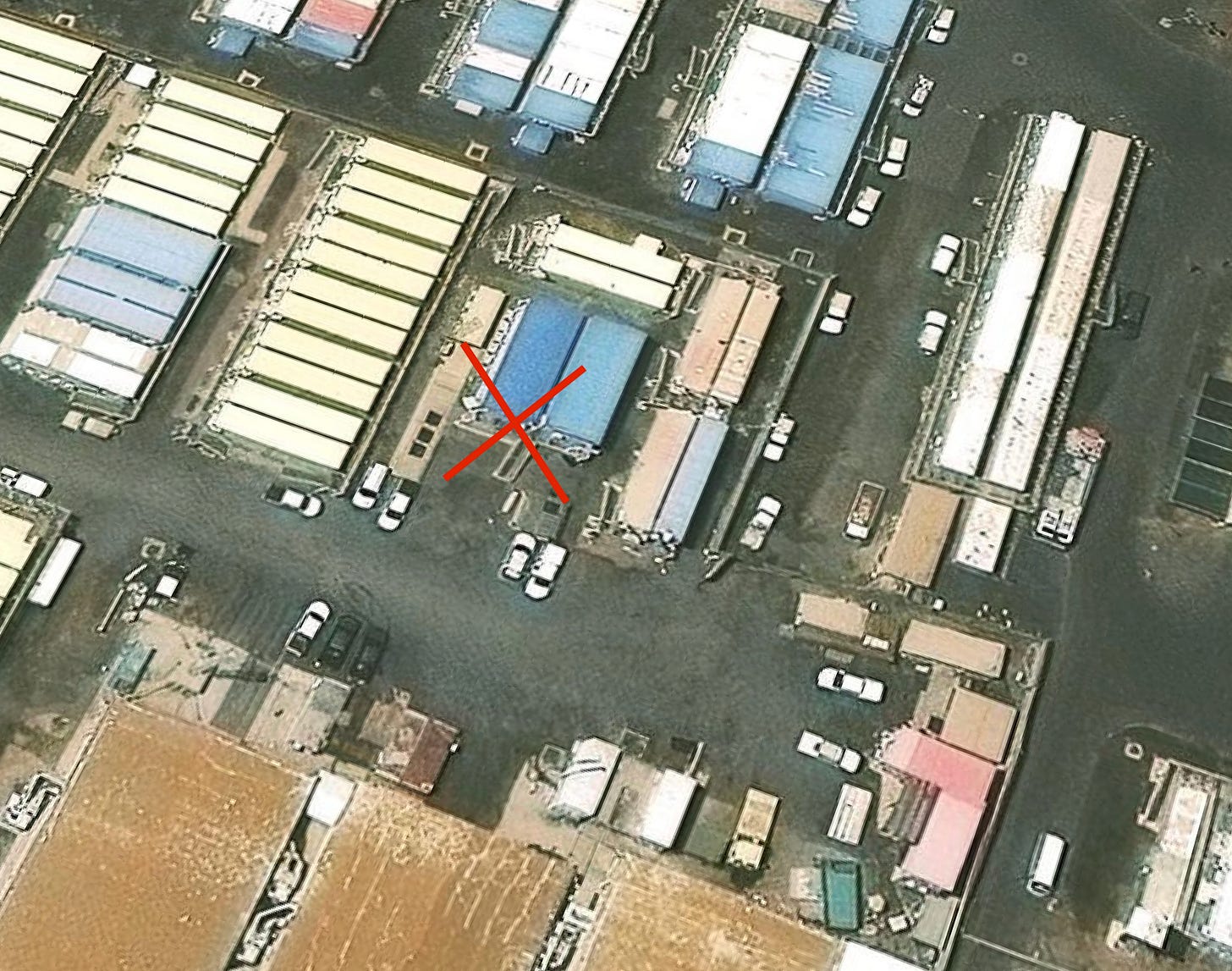PHOTOS: Shackled migrant escorted by DHS at Camp Lemonnier in Djibouti
Migrants are confined 24/7 to a packed 20x7 foot room in a shipping container, only being let out for trips to the bathroom in ankle shackles. A pickup truck idles outside the room around the clock.

Photographs obtained by a person living and working at Camp Lemonnier—the U.S. Naval Base in Djibouti in the Horn of Africa—have shed new light on the conditions being experienced by the eight migrants who landed there after a federal judge ordered the Trump administration not to land at their intended final destination in Sudan. This follows an earlier report that first revealed details on the migrants' conditions at Camp Lemonnier.
The exclusive photograph above shows one of the eight migrants currently being held at Camp Lemonnier going to use the bathroom in ankle shackles with a DHS officer, in one of the rare instances that they’re permitted to leave the shipping container they’re being detained in.
Below is a photograph taken outside their room. Naval police are on watch in a Dodge Ram1 blocking the door to this small twenty-by-seven-foot room that is holding nine people (eight detainees and a DHS officer) with almost no ventilation.2

By day, the blue tent in the above photograph provides shade to Naval Police officers so that they can stay cool. Temperatures can climb past 100° and stay in the high eighties overnight. The officers sit idling directly outside the room with limited airflow, although it is not clear how much of the exhaust from the running truck is making it into their room, if any, or if that has contributed to the health issues they’ve been experiencing after arriving.
A source in the defense industry, who has sent contractors to this base in the past, says that they stopped sending people to work there due to the poor living conditions. “There are no windows, just vents near the floor. The lighting is dim and spotty. I’m sure it’s miserable.”

They continued “Oh, it’s insane from what people I’ve sent there have told me. Nobody can leave the base without special permission because soldiers used to go into Djibouti City to sleep with local prostitutes. It’s also very dangerous.”
The same source expressed alarm at the DHS officers wearing OCP camouflage pants and patrol caps, which are standard issue for military personnel, not federal law enforcement. “No, that’s not normal, I wonder if they’re trying to blend in so people think they’re just military personnel transporting detainees, like terrorists or arms traffickers.”
They also raised additional concerns about the migrants’ health. “I can’t stress enough that if DHS personnel and the migrants went there without the 21-day prophylactic medical treatment, they’re all in danger. You can’t just pop in there, you have to be medically prepared for that deployment, and the minimum time that takes is 21 days.”
“This base runs major drone surveillance operations, so they can’t be happy with DHS squatting there. DHS shouldn’t even be there,” the source concluded.

The photographed 2013-2015 Dodge Ram 1500 Quad Cab matches the year, make, and model commonly used by Naval police on bases around the world. At Camp Lemonnier, virtually every official vehicle has a black license plate with white lettering that matches the plates used by vehicles in the country of Djibouti. Two different trucks are being used by Naval Police to guard the detainees. One is used during the daytime shift, the other one (pictured above) is used for the nighttime shift. There is no photograph of the other vehicle.
The 20x7 foot dimensions are listed in the 2025 Camp Lemonnier weclome packet as the general size of each individual containerized housing unit.



